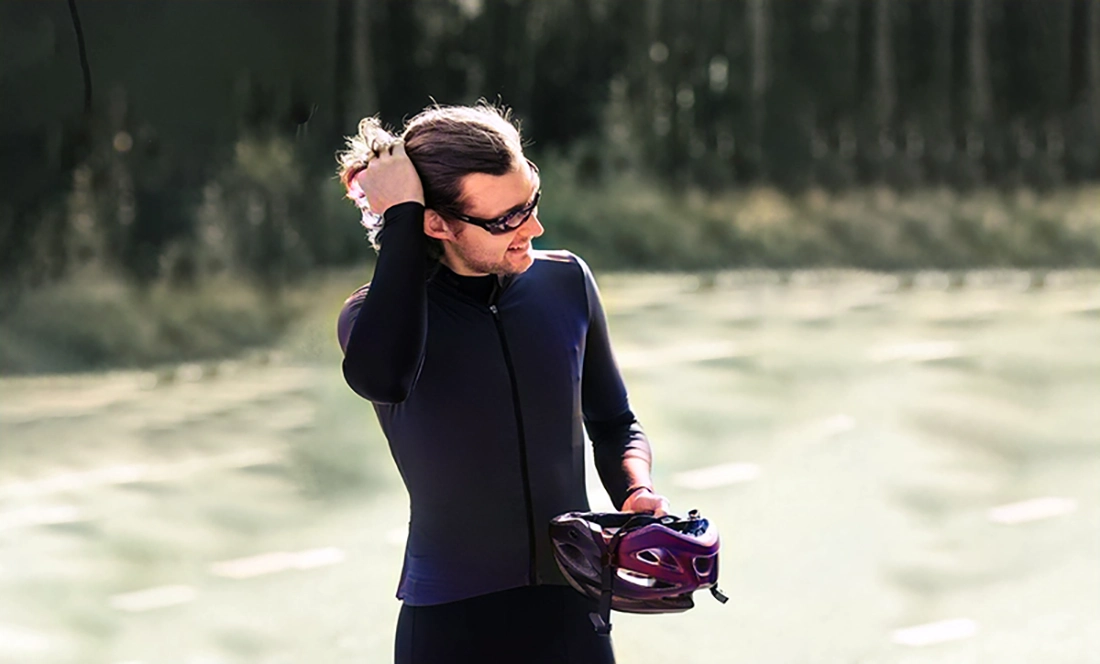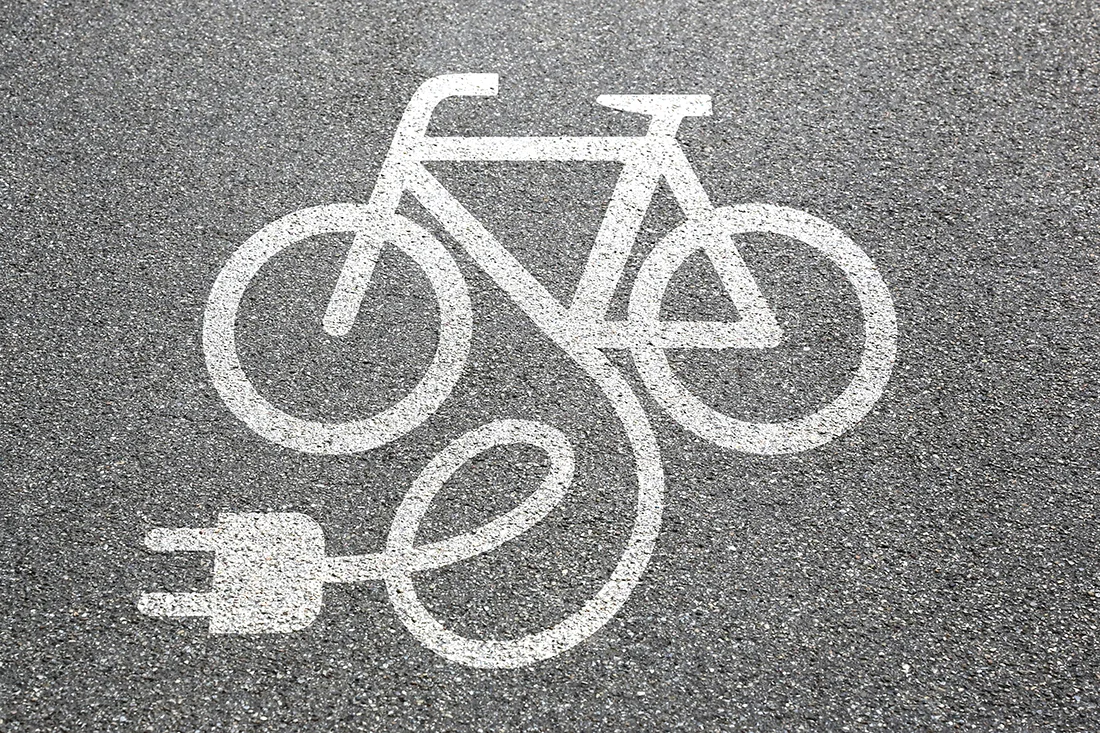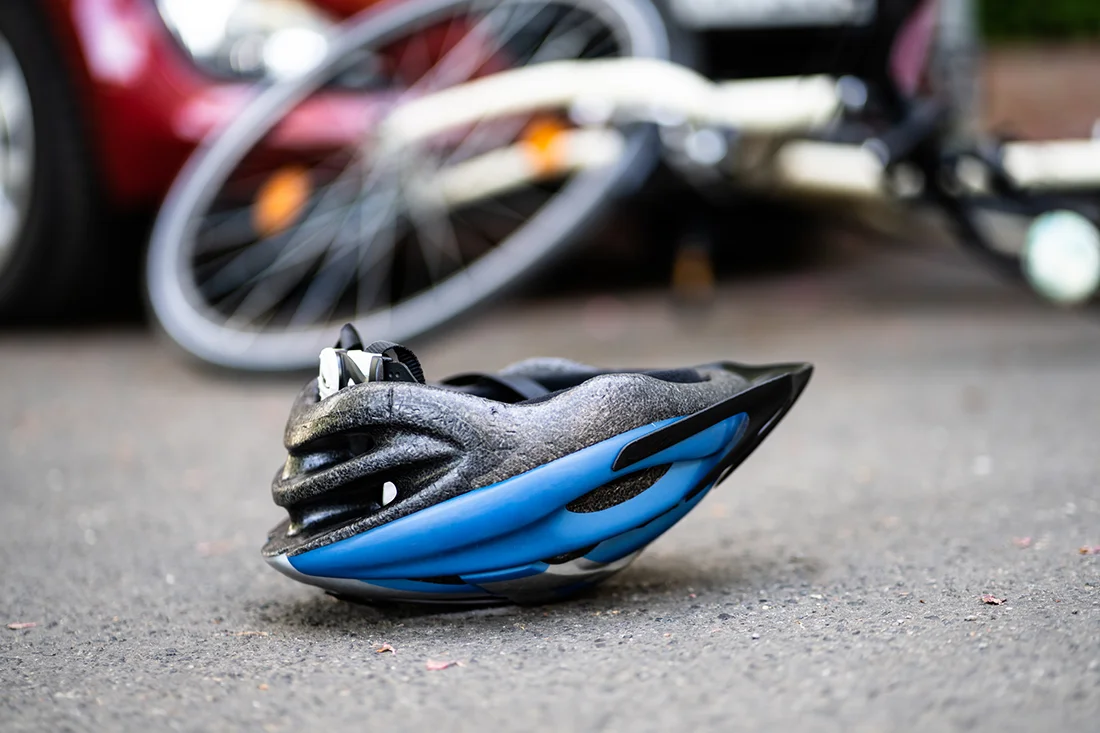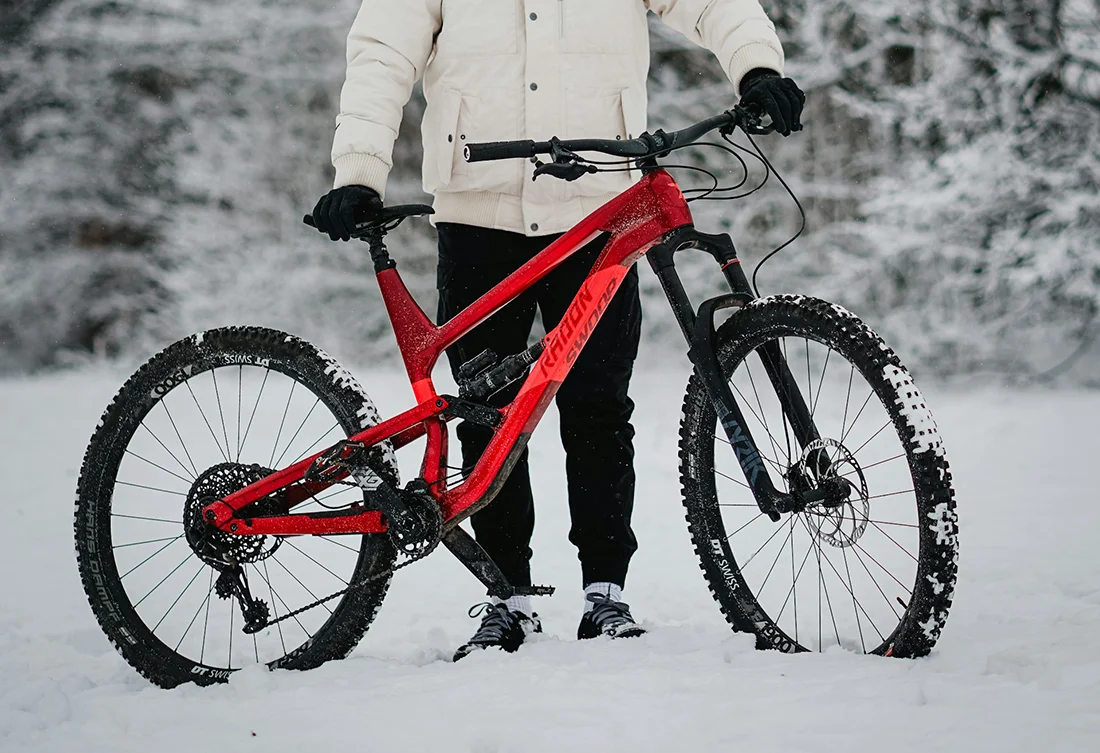Unless you’re completely bald, chances are you’ve had to deal with a serious condition known as helmet hair every time you go for a ride.
Cycling is a lifestyle choice that promotes health, environmental sustainability, and a unique sense of freedom. In other words, there’s a lot to love about it. But helmet hair is not one of those things!
Imagine this: You prep for your group ride, put on your best jersey, and leave your home with a well-groomed hairstyle, only to arrive at the coffee shop with your hair turned into a sweaty, flattened, and tangled mess.
Is there even a way to enjoy cycling without sacrificing your looks and enduring weird side-eyes from strangers?
Unfortunately, there’s no one-size-fits-all magic solution, but there are certainly effective steps that you can take before and after your ride to prevent and manage helmet hair.
Whether commuting to work, heading out for a leisurely ride, or pushing your limits on a group ride, our actionable tips will help you keep your hair in check.
Contents
What Causes Helmet Hair?
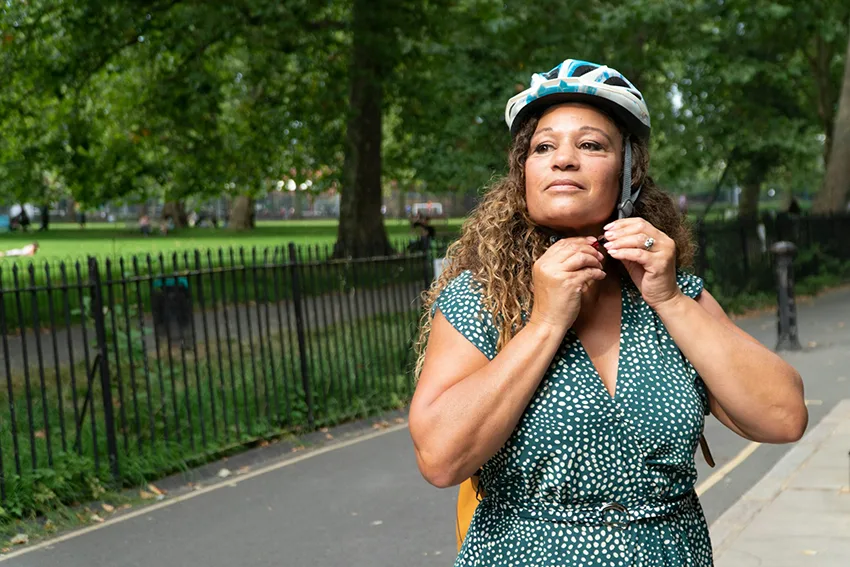
To know how to prevent and deal with helmet hair, you should first understand exactly what causes it.
The primary causes of this plight called helmet hair are pressure, friction, and moisture. The combination of these three factors messes up your perfect hairstyle and
The first factor that leads to helmet hair is the sweat produced during a ride, dampening the hair and causing it to stick together and lose its original form.
Once the hair is damp from sweat, the pressure and friction exerted by the helmet cause it to flatten and become tangled.
Helmet hair results from sweat-induced moisture, pressure, and friction under a helmet and can be tackled with better ventilation, a protective barrier, and the right hair products.
The lack of ventilation under the helmet and around your head prevents the sweat from evaporating, which exacerbates the issue and causes your hair to appear slightly greasy.
Therefore, dealing with helmet hair (either preventing it or managing it after the ride) involves improving ventilation, placing a barrier between the helmet and the hair, and treating the hair with appropriate products to make it more resilient.
Here are the exact steps to follow before cycling and upon arrival!
Helmet Hair: Preventative Steps Before Cycling
1. Choose Your Helmet Wisely
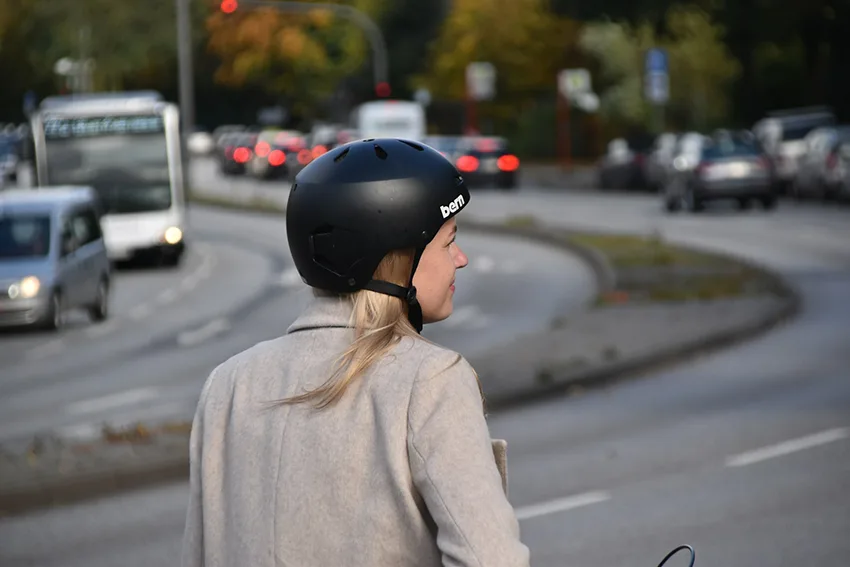
Moisture is one of the main culprits responsible for your unwanted helmet hairstyle. Therefore, it should be the first issue to tackle.
To reduce moisture and sweating while riding, make sure to choose a well-ventilated helmet that will allow moisture to evaporate away from your head.
In addition, make sure to learn how to choose a helmet that fits you well, which will prevent friction caused by the helmet shifting around.
The helmet should be the right size and fit your head circumference, as well as fit the shape of your head. Some brands make round helmets, whereas others choose a narrower shape.
Therefore, it’s best to try on a few models and see which one fits best. A helmet should feel snug on the head, but not uncomfortably so.
Check out our best bike helmets guide to see which models we recommend.
2. Choose the Right Hairstyle
Some hairstyles are more resilient to helmet hair than others, so you should choose wisely.
If you wear a long hairstyle, putting your helmet on loose hair will lead to a disaster once you take the helmet off.
Instead, hairstyles that keep the hair firm and flat against the head are ideal, such as low ponytails, single plait or French braids, a low bun, and so on.
These hairstyles will keep your hair securely in place and prevent it from getting tangled and matted under the helmet. You’ll end up with a neat appearance upon arrival.
Opt for firm, flat hairstyles like low ponytails or braids under a helmet to prevent tangling and matting, or consider a shorter cut for ease and better ventilation.
Another option is to cut your hair. You can cut your hair slightly or go for a buzz cut and call it a day. Another benefit here is that you’ll also improve ventilation.
Finally, if you have very long hair, we recommend against leaving it untied and flapping in the wind as it will inevitably get tangled. Instead, wear a low bun or tuck it under a neck gaiter.
3. Use Hair Products Wisely
Various hair products can help you prevent helmet hair or deal with it after it happens. However, using the right products and using the right amounts of said products is key; otherwise, you could achieve the opposite effect.
We recommend opting for non-grease products such as mousse or light-hold hairsprays that won’t weigh down your hair and make it look oily in combination with sweat.
Products like these will help your hair maintain its shape and prevent it from becoming flat and losing volume while you’re wearing a helmet over it.
We’d avoid products like waxes, pomades, and gels as they will most likely make your hair look greasy and matted. If you use these products, your hair will likely take the shape of your helmet.
Finally, if you have longer hair, consider using a detangling spray or leave-in conditioner. This will make your hair more manageable and make it easier to restyle after wearing your helmet.
4. Wear a Cycling Cap Under the Helmet

We are big fans of wearing a cycling cap under a bike helmet for several reasons. It enhances comfort, protects your head from bugs, and acts as a barrier between your hair and the helmet.
A cycling cap reduces friction between the hair and helmet, which is one of the main reasons that lead to helmet hair, causing breakage and tangling.
Wearing a cycling cap also means that the pressure of the helmet will be distributed more evenly, which prevents the recognizable indentations in your hair.
Related: A Complete Guide to Choosing the Right Cycling Clothing
In warm weather, choose a cap made from lightweight, breathable, and sweat-wicking fabric to prevent overheating and buildup of sweat.
Also, make sure that the cap is snug but not too tight, as this can lead to different hair problems.
5. Dry Your Hair Before Cycling
If you don’t want to end up with helmet hair, make sure to dry your hair thoroughly before cycling.
Wet or even slightly damp hair is much more pliable than dry hair and is likely to take the shape of your helmet as it dries.
Once you take the helmet off, you’ll end up with stubborn waves and imperfections that are very hard to restyle.
Managing Helmet Hair Upon Arrival
1. Shake Out Your Hair Immediately

The first thing you should immediately do after reaching your destination is remove your helmet and shake out your hair.
We’re all guilty of keeping our helmets on for as long as possible and walking around with them in an attempt to hide whatever is hiding beneath them. But don’t do that.
Depending on the situation, you’ll likely have to take the helmet off at some point, and it’s better to do it sooner than later.
Gently run your fingers through your hair, moving outward from the roots, trying to recover volume and natural shape.
If you have long hair, you can flip your head upside down while running your fingers through it and let gravity help you recover some volume.
2. Refresh Your Hair with Dry Shampoo
Dry shampoo can be a game-changer when it comes to dealing with helmet hair greasiness. Even though it can be a hassle to carry it on a ride, you can try to find a smaller travel-size package that can fit in your frame bag or jersey pocket.
Dry shampoo will absorb excess oils, refresh your hair, and allow you to reshape it more easily. When using it, make sure to evenly apply the shampoo to the roots. After that, wait for around a minute for the shampoo to absorb any oils, and then gently massage it with your fingers.
Using travel-sized dry shampoo can effectively absorb excess oils, refresh, and add volume to your hair, making it easier to manage helmet hair on the go.
After that, you can brush your hair to remove any residue and reshape your hair.
This process will refresh your hair, making it look dry and clean, as well as add texture and volume, which is typically lost when wearing a helmet.
3. Carry a Mini Hairbrush or Comb
Cyclists already have to carry so much gear that it’s not easy to find extra room in jersey pockets or frame bags for more stuff.
However, we advise keeping a comb or mini hairbrush on hand for quick hair fixes after taking your helmet off. Sure, you can run your fingers through your hair, but a comb or a hairbrush will do a much better job.
By running a hairbrush or a comb through your hair, you can redistribute natural oils that typically accumulate at the scalp while cycling.
Moreover, this will also help detangle your hair and reintroduce volume to any flat spots that might have formed.
A comb might be suitable for those with shorter hair types, while those with longer hair should consider carrying a compact hairbrush.
4. Keep the Cycling Cap on
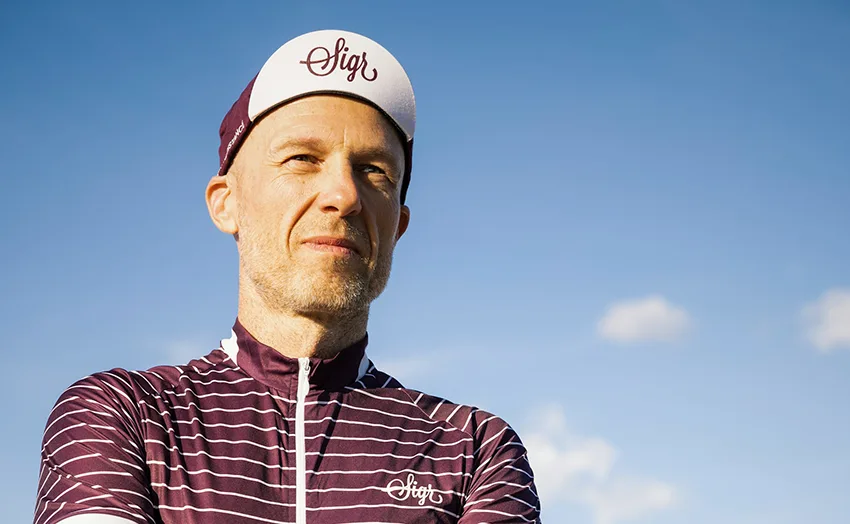
We’ve mentioned a couple of benefits of wearing a cycling cap concerning helmet hair. Well, another benefit is that you can keep your cap on after taking the helmet off, so nobody needs to know what hides underneath.
For additional points, choose a stylish cap that goes well with the rest of your cycling attire, which will make it a handy and fashionable extra.
5. Be Proud of Your Helmet Hair
Consider this: why bother with hiding your helmet hair or trying to fix it? Instead, you can embrace it and be proud of it, as a badge of your commitment to cycling and an active lifestyle!
This can be a positive and liberating approach. Instead of viewing helmet hair as a nuisance, accept it as a symbol of your adventurous spirit.
By accepting this shift in mindset, you’ll be able to enjoy cycling a lot more, not worrying about what will happen once you take the helmet off in a cafe or on a group ride break.
Remember, you’re not alone in this dire situation—everyone who wears a helmet has to deal with helmet hair.
Conclusion
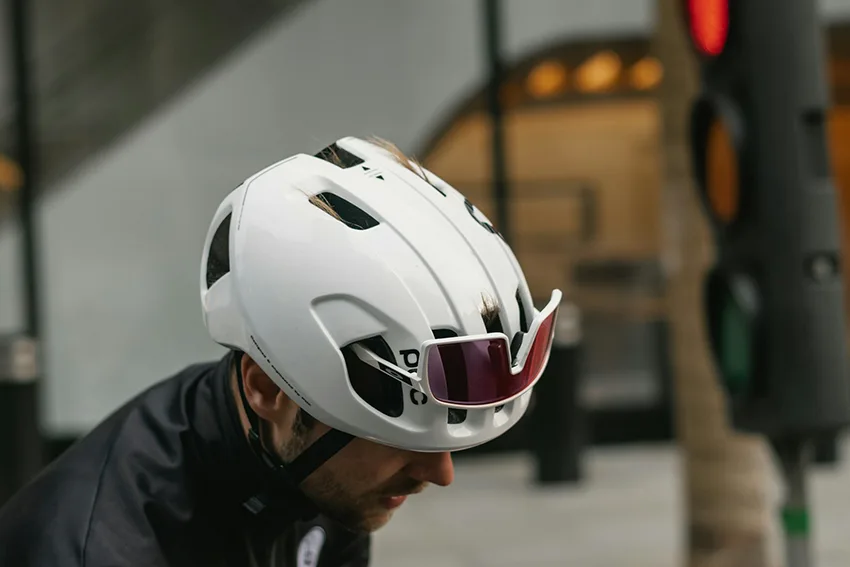
In conclusion, while helmet hair is an unavoidable part of cycling, there are easy ways to deal with it and improve your hair situation at least slightly.
Understanding the main factors that contribute to helmet hair, such as moisture, pressure, and friction, allows us to tackle the problem head-on (pun intended).
The main preventative measures include choosing a well-ventilated helmet, wearing helmet-friendly hairstyles, wearing a cycling cap, and using the correct hair products.
Also, post-ride steps to deal with the helmet hair emergency include using products like dry shampoo, brushing your hair, or simply owning your new, unique hairstyle.
Cycling’s tremendous health benefits and the helmet’s protective potential far outweigh the temporary inconvenience of helmet hair.

